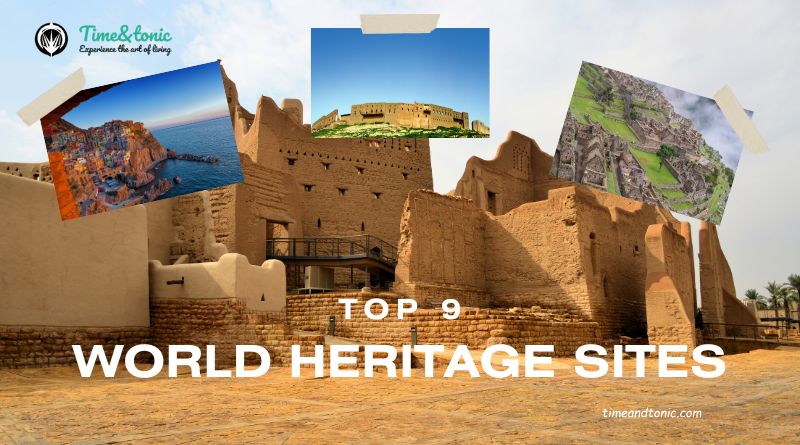Top 9 World Heritage Sites That Define Human History
World Heritage Sites are not just remarkable places; they are our legacy, a testament to the ingenuity, artistry, and history of human civilization. However, World Heritage Sites hold exceptional universal value for humanity and are officially listed and protected by the United Nations Educational, Scientific and Cultural Organization (UNESCO) to ensure their preservation for future generations. Many World Heritage Sites hold profound historical and cultural importance, serving as tangible remnants of ancient civilizations, the backdrop to pivotal historical events, or as sites of profound religious and cultural relevance.
In this article, we embark on a journey to explore nine of the most exceptional World Heritage Sites that grace our planet.
Best UNESCO World Heritage Sites
In this guide featuring the top UNESCO sites, we will embark on a journey across continents and through history to shine a spotlight on some extraordinary destinations. Each stop on this voyage guarantees a distinctive adventure and an up-close encounter with the intersection of culture, history, and geography.
Are you prepared to set forth on a captivating journey that intertwines the past with the present? Join us as we uncover the treasures that await at the World Heritage Sites.
1. Machu Picchu, Peru
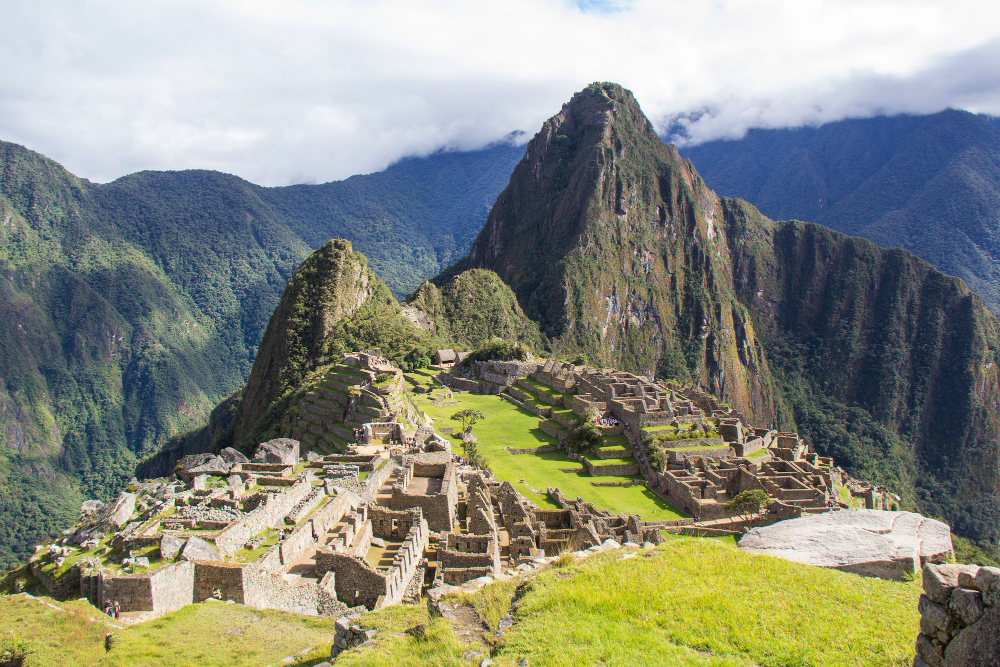
Perched atop the Andes Mountains, Machu Picchu stands as an iconic marvel in South America, boasting a rich history that has earned it a prominent place among UNESCO World Heritage Sites.
Constructed during the 1400s under the reign of the Inca Empire, which once ruled the region, Machu Picchu serves as a remarkable testament to Incan achievements in architecture, astronomy, art, and religion.
Embarking on the multi-day trek to reach this site is an extraordinary adventure in itself. Given its lofty elevation of 8,000 feet (2,400 m), it is advisable to dedicate a day or two to acclimatize to the altitude in nearby Aguas Calientes.
Machu Picchu not only ranks among the most breathtaking destinations in Peru but also stands as a global symbol of exploration and discovery. The awe-inspiring ruins set against the majestic backdrop of the Andes resonate deeply with the human spirit, serving as a timeless reminder of our unyielding pursuit of knowledge and the indomitable spirit of exploration.
How to Reach: Machu Picchu is easily accessible via a short bus ride or hike from Aguas Calientes, following a 3.5-hour train journey from Cuzco, a city that boasts one of the world’s finest Airbnb accommodations.
Quick Link: 8 Items at Walmart You Should Buy: Quality and Savings Await
2. Angkor Wat, Cambodia
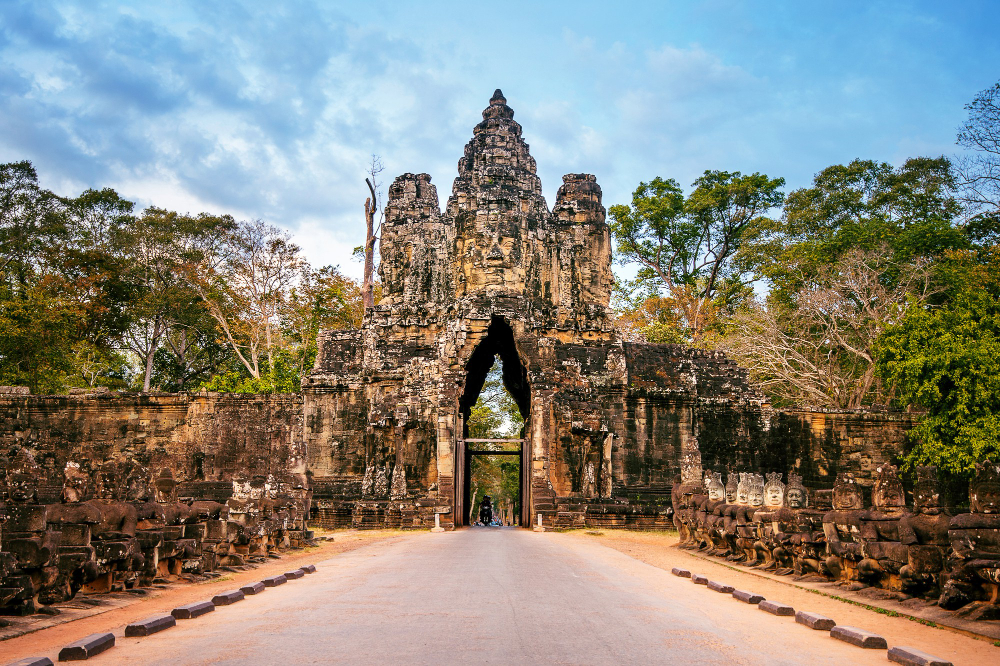
Nestled within the lush jungles of Cambodia hides an enduring archaeological marvel: Angkor Wat. Encompassing a vast expanse of over 400 square kilometers, this expansive temple complex not only holds the title of the world’s largest religious monument but also ranks among the most captivating UNESCO World Heritage Sites.
With origins dating back to the 12th century, Angkor Wat was initially constructed as a Hindu temple and later transformed into a Buddhist sanctuary. Its ruins, cleverly concealed by the surrounding foliage, exude an enchanting sense of mystique.
Beyond its architectural and historical significance, Angkor Wat embodies the resilience and cultural spirit of the Cambodian people. Having weathered centuries of nature’s reclamation and recent turbulent history, it now stands as a resounding testament to Cambodia’s enduring cultural heritage.
Covering more than 400 acres (162 hectares), Angkor Wat ranks among the world’s largest religious monuments and stands as one of the most picturesque destinations in Asia.
How to Reach: Angkor Wat, situated in Siem Reap, can be reached via a convenient 1-hour flight from Bangkok, Thailand.
3. Taj Mahal, India

If you’re seeking to explore a remarkable UNESCO World Heritage Site, the Taj Mahal in India promises an awe-inspiring experience.
Few architectural wonders around the world can rival the sheer magnificence and artistic brilliance of the Taj Mahal. As an embodiment of love and a masterpiece of architecture, it proudly graces the banks of the Yamuna River in Agra, India. Amidst the array of stunning destinations in India, the Taj Mahal undoubtedly shines as a beacon of splendor.
Constructed in 1643, the Taj Mahal is a breathtaking testament to Indo-Islamic architecture. Crafted from pristine ivory marble, this monument was commissioned by Mughal Emperor Shah Jahan as a mausoleum for his beloved wife. Today, it stands as one of the New 7 Wonders of the World, radiating its timeless allure.
How to Reach: The Taj Mahal is easily accessible via a 2-3 hour train ride from Delhi.
4. Pyramids of Giza, Egypt

There are few Egyptian landmarks as iconic as the Pyramids of Giza. A mere glimpse of these magnificent structures conjures images of pharaohs, ancient deities, and a civilization that laid many of the cornerstones for the modern world. As one of the few remaining Seven Wonders of the Ancient World, the Pyramids have rightfully secured their status as a UNESCO World Heritage Site.
Constructed around 2,500 B.C., the Ancient Pyramids of Giza form a complex that includes pyramids, rock tombs, and the enigmatic Sphinx. These pyramids were designed as final resting places for the pharaohs, who were meticulously mummified and buried alongside treasures to prepare them for the afterlife.
Dominating the skyline, the Great Pyramid of Khufu serves as a testament to the architectural genius and legacy of the ancient Egyptians. In close proximity, the Sphinx, with its lion’s body and human head, adds to the air of mystery and grandeur, gazing eternally towards the horizon, as if safeguarding the secrets of bygone eras.
What renders the Pyramids of Giza truly captivating is their status as some of Egypt’s most iconic landmarks. Despite millennia having passed since their construction, they continue to captivate the collective imagination of humanity.
How to Reach: The Pyramids of Giza are easily accessible via a short bus or taxi ride from Cairo.
5. Petra, Jordan
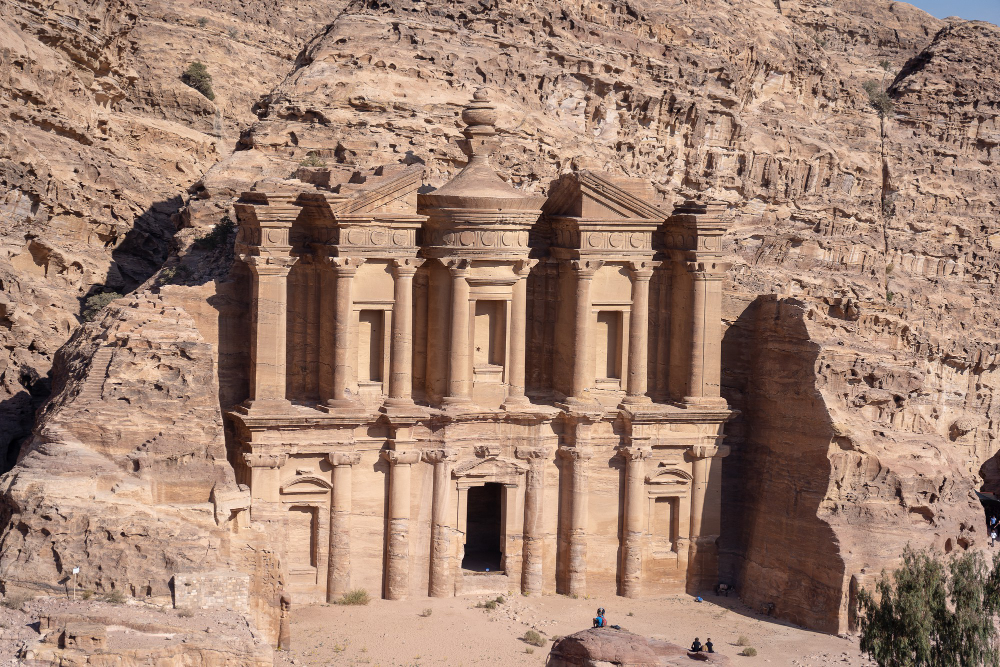
Nestled amidst the rugged desert canyons of southern Jordan, Petra materializes like a mirage, defying the ravages of time and nature. Renowned as the ‘Rose-Red City’ for the enchanting hue of its rock-carved structures, Petra takes its place among the world’s most captivating UNESCO World Heritage Sites.
The ancient city of Petra traces its origins back over 2,300 years. Its distinctive character arises from the temples and tombs skillfully hewn into the rose-colored sandstone.
Upon entering, visitors pass through the Siq, a narrow and winding gorge that serves as a prelude to Petra’s most magnificent gem: Al-Khazneh, also known as the Treasury. This monumental temple facade intricately chiseled directly into the rosy cliffs, stands as a testament to the ingenuity and artistic mastery of the Nabateans, an ancient Arab civilization.
Yet, the wonders of Petra extend far beyond this iconic sight. With more than 800 individual monuments, encompassing tombs, temples, sacrificial altars, and colonnaded streets, the city beckons explorers to uncover its rich tapestry of trade, culture, and ancient traditions.
Petra is ensconced amidst a landscape of mountains, canyons, and riverbeds, spanning an expansive 100 square miles (264 square km).
How to Reach: Petra is accessible via a 3-hour drive from Amman.
6. Galápagos Islands, Ecuador

Picture yourself stepping onto islands where wildlife thrives undisturbed, existing in harmony with nature, free from human interference. The Galapagos Islands offer precisely this—a realm where the boundaries between humans and the natural world blend seamlessly. Situated in the vast expanse of the Pacific Ocean, this archipelago stands as a remarkable destination in South America.
Located 620 miles (1,000 km) off the South American coast, the Galápagos Islands boast some of the planet’s most exceptional and unique wildlife.
In the mid-1800s, Charles Darwin embarked on a pivotal journey to the Galápagos Islands, where he made the groundbreaking observation that each island had its distinct array of wildlife. This revolutionary insight played a significant role in the Galápagos Islands earning their well-deserved UNESCO World Heritage status.
How to Reach: Accessing the Galápagos Islands involves a flight of just under 2 hours from Guayaquil, Ecuador. While the journey may present some challenges, the reward of experiencing one of the world’s most incredible island ecosystems is unquestionably worth it.
7. Paris, Banks of the Seine, France

Ah, Paris! The mere utterance of its name conjures visions of romance-filled evenings, exquisite culinary delights, and art that speaks to the deepest recesses of the soul. It’s no wonder that the dream of flying to Paris is one cherished by many. Paris is more than just a city; it’s a world unto itself, brimming with an abundance of history and irresistible charm.
Within Paris lies a trove of historical and cultural treasures that gracefully span the River Seine. Among these cherished landmarks are the awe-inspiring Notre Dame Cathedral, the majestic Palais du Louvre, and the iconic Eiffel Tower, to name but a few.
Of all the captivating sights that Paris offers, none rival the grandeur of the Eiffel Tower. Its intricate lattice of iron, aglow against the night sky, stands as a symbol of love and sophistication. Yet, Paris’s allure extends far beyond this iconic landmark. The storied banks of the River Seine, the Gothic splendor of Notre Dame Cathedral, and the vast artistic riches housed within the Louvre Museum are just a glimpse of the city’s treasures that beckon to travelers.
For a vacation experience like no other, I wholeheartedly recommend a visit to the French capital. Paris’s rich tapestry of history and culture firmly establishes it as one of the most splendid UNESCO World Heritage Sites.
How to Reach: Paris boasts four airports, making it accessible from virtually every continent. For those seeking travel tips, you can peruse my travel hacks article to discover how I’ve managed to secure roundtrip fares for less than $250 departing from Boston.
You May Also Like: The 7 Greatest Classic Cars on Earth, Ranked
8. Mesa Verde National Park, USA
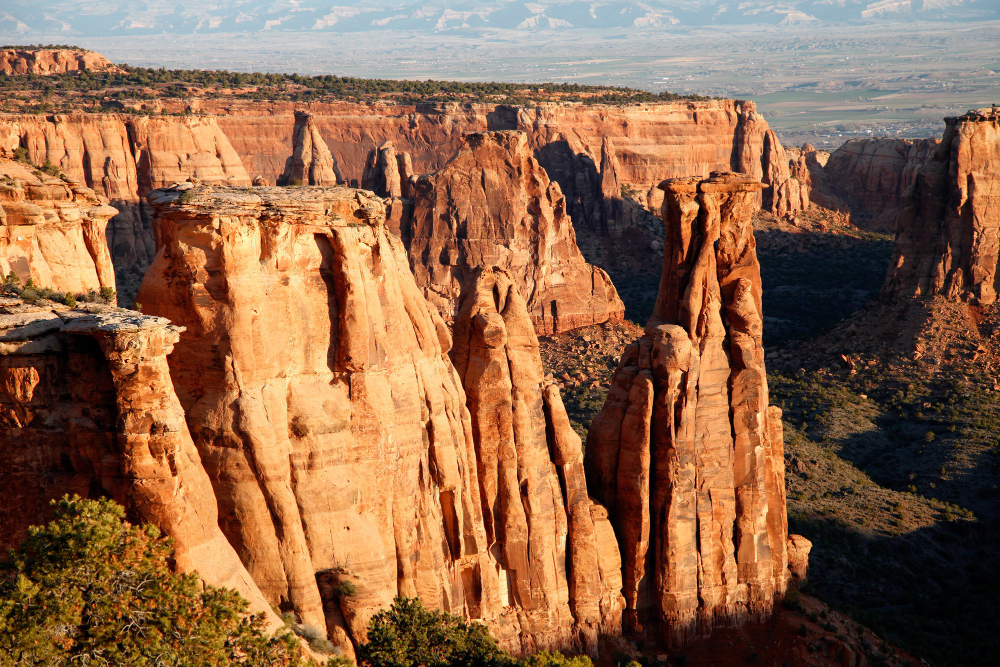
In search of exciting activities in Colorado? Cast your eyes back in time and embark on a journey through Mesa Verde National Park. Nestled amidst the stunning landscapes of Colorado, this park offers a one-of-a-kind exploration into the lives of the Ancestral Puebloans. As you traverse cliff dwellings and ancient structures, you are quite literally stepping into the annals of history.
Situated in the southwestern region of Colorado, Mesa Verde National Park is renowned for its remarkably well-preserved cliff dwellings that trace their origins back to 600 A.D. These dwellings were once inhabited by the Ancestral Pueblo people, formerly known (though incorrectly) as the Anasazi.
Within Mesa Verde National Park, archaeologists have uncovered a trove of over 5,000 ancient artifacts and 600 cliff dwellings. Mysteriously abandoned around 1200 A.D., these dwellings remained concealed until cowboys stumbled upon them in the late 19th century. Given its extraordinary historical significance, it’s no wonder that this remarkable place holds a distinguished position among the world’s top heritage sites.
How to Reach: Mesa Verde National Park is conveniently located just a half-hour drive from Cortez, Colorado, and a mere hour from Durango, Colorado.
9. Hawaii Volcanoes National Park
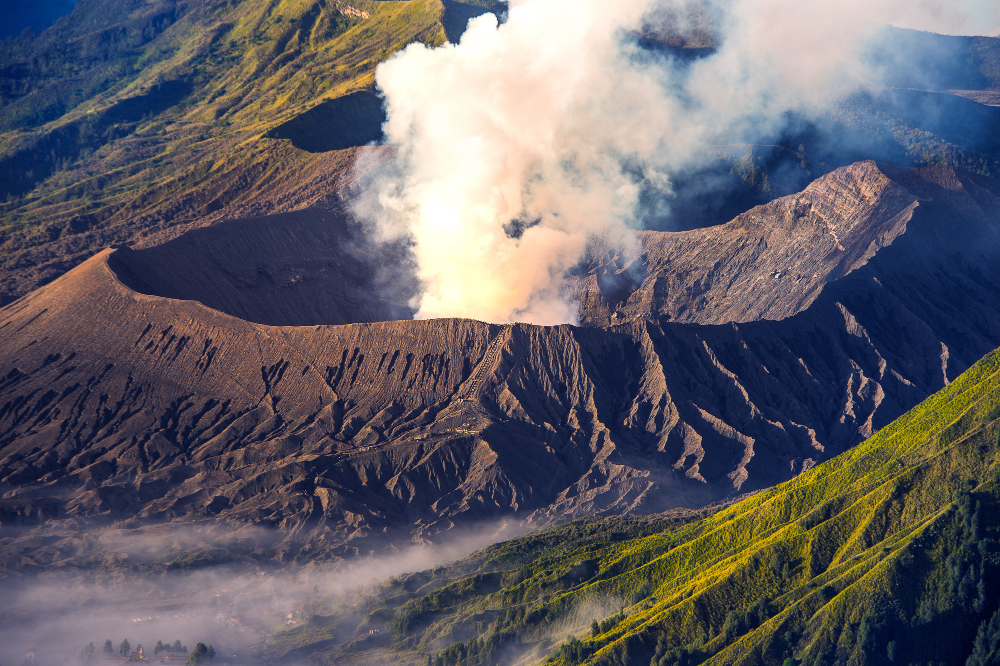
Picture yourself standing at the precipice of a smoldering crater, gazing upon billowing plumes of smoke, feeling the warmth rising from below, and enveloped by the lush embrace of a tropical rainforest. Welcome to Hawaii Volcanoes National Park, a truly magnificent destination in Hawaii that seamlessly combines the unbridled force of creation with the bounty of nature.
This national park encompasses an expansive expanse of over 500 square miles of sacred land and is home to one of the world’s most actively erupting volcanoes, Kilauea. Here, you’ll encounter volcanic craters, arid deserts, verdant rainforests, and even ancient petroglyphs.
Kilauea, which last erupted in 2018, holds the distinction of being the only “drive-in” volcano on Earth. It continuously disgorges copious amounts of lava each day, making it a sought-after attraction for tourists. Witnessing the sheer power of this volcano up close is an extraordinary experience.
As a hallowed place that has profoundly shaped Hawaiian culture for generations, Hawaii Volcanoes National Park undeniably ranks among the finest UNESCO World Heritage Sites.
While in Hawaii, be sure to allocate ample time for island hopping to nearby Maui, Oahu, and Molokai to make the most of your trip!
How to Reach: To reach Hawaii Volcanoes National Park, take a flight to Hilo, located on the Big Island of Hawaii, and then embark on a scenic 45-minute drive southward.
Final Words
In the tapestry of human history, UNESCO World Heritage Sites represent the most vibrant and enduring threads. These sites transport us through time, offering a profound connection to our collective past. From the architectural marvels of the Pyramids of Giza to the natural wonder of the Galápagos Islands, these sites celebrate the diversity of our planet’s heritage. As we explore the remnants of ancient civilizations, the pristine beauty of nature, and the artistic ingenuity of our ancestors, we come to understand the profound impact of these sites on our world’s cultural, historical, and ecological tapestry.
FAQs
UNESCO World Heritage Sites must meet certain criteria, including demonstrating outstanding universal value, representing a significant cultural or natural heritage, and being well-preserved or actively protected.
As of my last knowledge update in September 2021, there were approximately 1,121 UNESCO World Heritage Sites worldwide. However, this number may have changed as new sites are designated and others are added or removed from the list.
Yes, in general, UNESCO World Heritage Sites are open to the public, and many of them are popular tourist destinations. However, the level of access and any restrictions may vary depending on the specific site and local regulations, so it’s advisable to check in advance when planning a visit.

